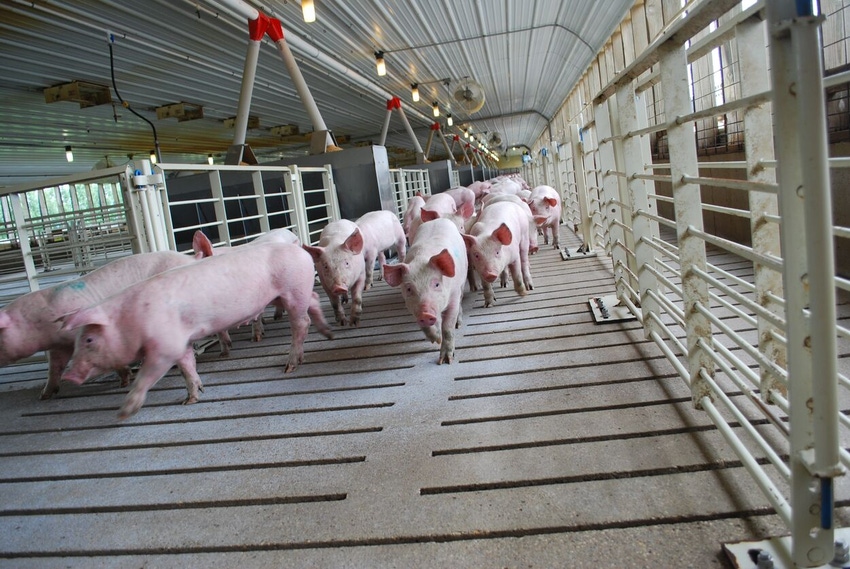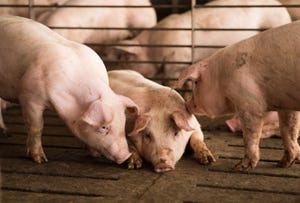Hog price direction, it's a complicated world out there
With pork production not increasing in the months ahead, if China returns to the U.S. pork export market, prices are likely to move higher.
September 5, 2022

There is an awful lot to worry about these days. The continued war in Ukraine with no end in sight, Chinese COVID-19 lockdowns, a major energy crisis in Europe, the U.S. Federal Reserve raising interest rates, a surging dollar and declining stock market.
Boiling down the fundamental landscape can be an awesome task. My approach is to make it as simple as possible. I start by asking and answering the following questions:
The United States does not ship pork to Europe, so does the impending recession in Europe really negative to U.S. pork prices? Likely not.
This winter as the war continues, what are the Ukranian people going to eat? Will massive amounts of U.S. food aid be involved? I don't have an answer for these questions.
What about China? Chinese pig prices continue to rise. Will they be forced to buy increasing large amounts of U.S. pork soon? In my opinion, yes.
What about U.S. pork production? Is it likely to rise in 2023? Currently the USDA is projecting U.S. pork production in 2023 to increase by 1.6% compared to this year. In the face of continued high to very high input costs, my guess is that production will not rise next year.
Short term, turkey prices are projected to be record high going into the holiday season. How does this impact ham prices? I look for strong to very strong holiday demand for hams in the weeks ahead.
The United States is currently in a recession. However, job growth remains powerful strong, and the unemployment rate remains historically low. Is this situation bullish or bearish toward hog prices? More people are entering the workforce. This situation is bullish toward pork consumption and hog prices.
In the short term, fourth quarter pork production is projected to drop 1.6% compared to the fourth quarter of last year. Fourth quarter beef production is projected to fall sharply, dropping 5.1% from the fourth quarter of last year. Broiler production is expected to increase by less than 1% during the fourth quarter. Thus, in the short term the meat supply situation is bullish. I've been anticipating a seasonal low in lean hog futures into the end of August. October futures filled a long-held gap last Friday, reaching an important downside objective. The seasonal low should be clearly established by Friday, Sept. 9.
.
Most primal pork prices have tumbled from their summer highs. Ham prices peaked near $1.20/pound and currently are trading around 95 cents. Pork butts traded as high as $1.94/lb in July and they're currently priced at $1.11, or nearly 45% lower. Pork belly prices peaked at the end of July at $2.20/lb and are currently trading at $1.37, for a discount of nearly 40%. The value of the hog carcass peaked on July 25 at $1.27 and is currently valued near $1.02, or down 20% from the highs.
Lower pork prices are necessary to stimulate increased export sales. Pork exports during June were down 5.5% versus last year. Exports during June were down 8% to Japan, down 42% to China and down 7% to Canada. Exports were also sharply lower to Australia, The Philippines and Honduras. It's not all bad news, however. Exports in June were up 6% to Mexico (our largest customer), up 13% to South Korea (our fourth largest customer), up 91% to Colombia and up 110% to the Dominican Republic. In my opinion, lower priced pork will bring China back into the U.S. market in a major way, vastly improving exports during the fourth quarter.
The debate regarding U.S. corn yield and total crop size continues in force which is always the case at this time of year. However, what is clearly evident is that corn prices are very unlikely to retreat below $5.50/bushel regardless of future adjustments in yield and crop size. In other words, historically high corn prices appear to be the reality over the next 12 months, or longer.
In this feed price environment, in my opinion, pork production is currently overstated by the USDA. Continued contraction in U.S. breeding numbers is likely over the next six months. This, along with continued contraction in EU breeding numbers will set the table for a bullish move upward in hog prices this winter and into the summer of 2023.
With pork production not increasing in the months ahead, if China returns to the U.S. pork export market, prices are likely to move higher to sharply higher during the winter and approaching next summer. Now is not the time to establish hedges. Forget about any hedges against the October contract. Basis the December, on a price recovery to $86, I recommend buying the $82 puts, establishing a price floor while leaving the upside to prices totally open. Refrain from any hedges for 2023 until seasonal high timing comes into play around the end of November.
Dennis Smith publishes his evening livestock wire daily for clients and subscribers. For a free 30-day trial send an email to [email protected].
Source: Dennis Smith, who is solely responsible for the information provided, and wholly owns the information. Informa Business Media and all its subsidiaries are not responsible for any of the content contained in this information asset. The opinions of this writer are not necessarily those of Farm Progress/Informa.
About the Author(s)
You May Also Like





